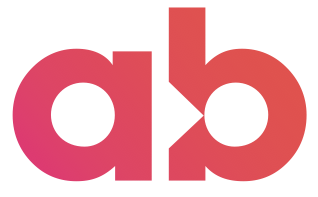When should I coach my team and when shouldn’t I?
Leadership Blog

Written by Achieve Breakthrough

In 2008 Google launched Project Oxygen to better understand what kind of leadership hierarchy the company needed to operate at its best. The prevailing view in Silicon Valley at the time was that a flat hierarchy was the way forward, but in reality that often caused bottlenecks with one individual making decisions on everything. To find the ideal structure, Google stripped back as many layers of management as possible to work out what they then needed to bring back.
Part of Project Oxygen was a study into what makes a good leader. While leadership is more than just a shopping list of competencies, one of the responses that kept coming out on top was coaching. That’s not unique to Google, either. Right across the business world, leaders have seen a huge movement to embrace coaching and the facilitation of learning as an essential responsibility.
But although coaching is critical to leadership, it’s also true that it doesn’t apply to every situation. There are even times when taking a coaching approach is not only less helpful than a direct instruction but can also cause some major headaches. Knowing where to draw that line isn’t always clear, both for long-time leaders and those new to their roles.
The coaching continuum
The first step to knowing when or when not to coach is understanding that coaching itself is not binary. It’s more like different modes that sit along a continuum, and their uses are contextual.
At one end of the continuum is facilitation, or what you might get from a professional coach. In this mode the emphasis is on asking powerful questions and empowering others to find answers themselves. The coach’s own insights rarely come into the equation.
On the other end is coaching centred around putting forward specific, technical insights to help guide the other person. Leaders within organisations tend to fall towards this end of the spectrum. They have likely trodden the same path as their direct reports, and therefore they can offer guidance on how to avoid potential pitfalls.
For leaders adopting coaching, it’s not always about striving to emulate a pure, professional facilitator. Sometimes there’s a need to provide your own technical insights, and the nuance will always be led by the context and what best suits your direct report’s needs.
When coaching works best
At its heart coaching is about fostering and developing potential, which makes it particularly apt for organisations trying to innovate and disrupt their market. Organisations like these thrive on hiring high-potential knowledge workers, whose main value is in the unique technical skillset and perspective they bring to the table.
Here the model of a leader who’s a greater expert than everyone else doesn’t fit – if you already have someone who knows all the answers, you don’t need to hire that team of brilliant minds to report to them. But when your direct reports are there to find unique solutions to problems and not just execute a task, coaching will achieve that far better than a mandate.
Coaching is also the answer when you’re looking for commitment to your organisation’s mission. This is perhaps especially true of startups, but it applies to any organisation driven by a cause and a set of values.
You can’t mandate commitment – you can only try to foster it in your team. Everyone will apply their own perspective and interpretation to that mission and won’t always buy into it for the same reasons you did. But coaching can help them find the right mindset so they reach the same conclusion.
When coaching should be avoided
Coaching works best when the goal is to empower your direct reports to find their own answers or solutions. But when a clear instruction is needed, coaching isn’t really appropriate.
Take underperformance, for example. If a direct report is seriously underperforming you might be reluctant to give them bold feedback. Coaching them to see where they can improve might feel sufficient. But if they’re already aware of the issue and it’s still cropping up, that’s a sign that coaching isn’t going to resolve it – instead you need to lay out clear targets and tell your report to meet them.
The same goes for when your expertise and knowledge as a leader does exceed that of your direct reports. Trying to coach someone into giving an answer you already know often doesn’t give them a feeling of agency – instead it can leave them feeling quizzed, or like a pupil answering a teacher in the classroom. If you know how something must be done, it’s OK to be direct.
And, of course, when it comes to procedures or instructions that must be followed, clarity is critical and coaching is rarely going to cut it. Sometimes there’s no room for confusion, particularly when it comes to things like health and safety. Standard operating procedures can only be mandated, not coached.
However coaching can still be brought in to encourage feedback on those procedures. You can set out clear instructions on what’s expected, while still giving your direct reports scope to challenge any breakdowns they might see. That way you can have your cake and eat it too. Looking to create an impossible future? Get in touch to explore how we can help you ignite your ambitions.
Published 23/07/2024
Subscribe by Email
Achieve more breakthroughs. Get expert leadership ideas, insights and advice straight to your inbox every Saturday, as well as the occasional bit of news on us, such as offers and invitations to participate in things like events, webinars and surveys. Read. Lead. Breakthrough.
Related posts
Leadership Blog
Leadership burnout: Expanding bandwidth to thrive through complexity
Achieve Breakthrough | 16/12/2025
Leadership Blog
What triggers you as a leader, and how to work with it?
Achieve Breakthrough | 09/12/2025
Leadership Blog
Why it’s impossible to lead with one foot still in your old role
Achieve Breakthrough | 03/12/2025
Leadership Blog
Why a leader’s true value lies in what they enable, not just what they know
Achieve Breakthrough | 25/11/2025
